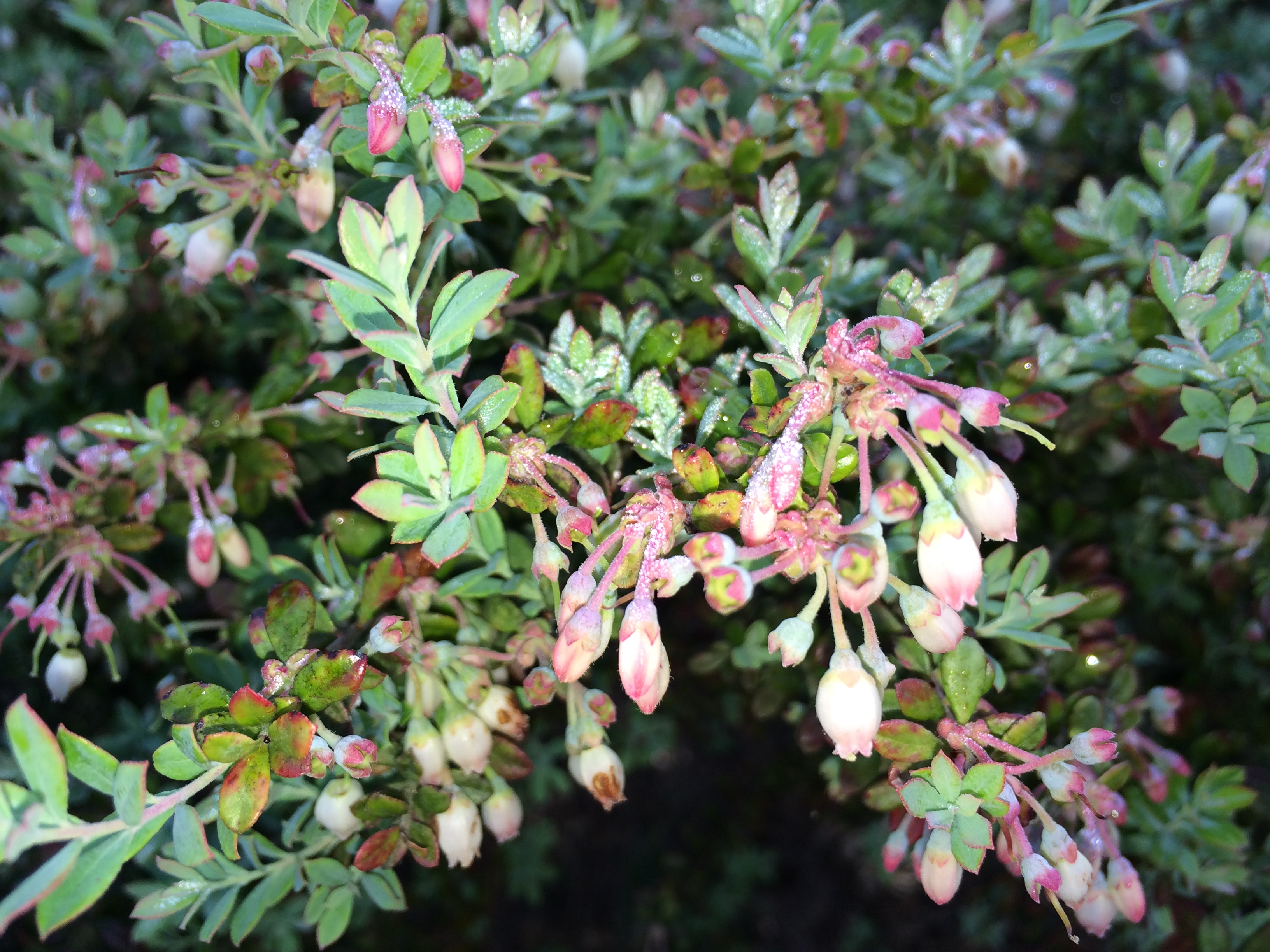
by Mary Salinas | Apr 15, 2014
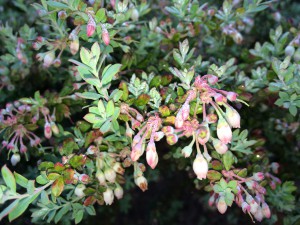
Darrow’s Blueberry with spring blooms. Photo credit Mary Derrick UF IFAS.
A blueberry bush as a landscape shrub?
Yes! Darrow’s blueberry, Vaccinium darrowii, is closely related to the other blueberries you know and love, but this little gem of a shrub is highly ornamental and will fit in with any landscape scheme.
This compact shrub stays usually stays under three feet tall and wide, making it a perfect size for the home landscape. The small evergreen leaves emerge with a delightful pinkish tinge. In spring, pinkish white small flowers emerge and are followed by small but delicious blueberries. This blueberry will self-pollinate and set fruit, but studies have shown that there will be a sizable increase in fruit set if another variety of blueberry is close by for cross-pollination.
Darrow’s blueberry is a Florida native so it is perfectly adapted to our environmental conditions. Once established it has a moderate drought tolerance. Like other blueberries, it likes full sun, requires acidic soils with a pH between 4.0 and 5.5, and prefers the addition of organic matter into the planting bed if the soil is quite sandy. Pests are usually not a problem except for competition for the ripe fruit from wildlife.
If needed, there are several fertilizer options for blueberry; a 12-4-8 with 2% magnesium, a “blueberry special” formulation or a fertilizer formulated for camellias and azaleas. Whichever you use, apply the fertilizer lightly and widely spread around the plant– only about one ounce per plant every 2 months during the growing season April through October. Blueberries can be easily killed by too much fertilizer.
For more information, please see:
Blueberry Gardener’s Guide
Gardening Solutions: Blueberries
Florida Native Plant Society: Darrow’s Blueberry
Creating an Edible Landscape
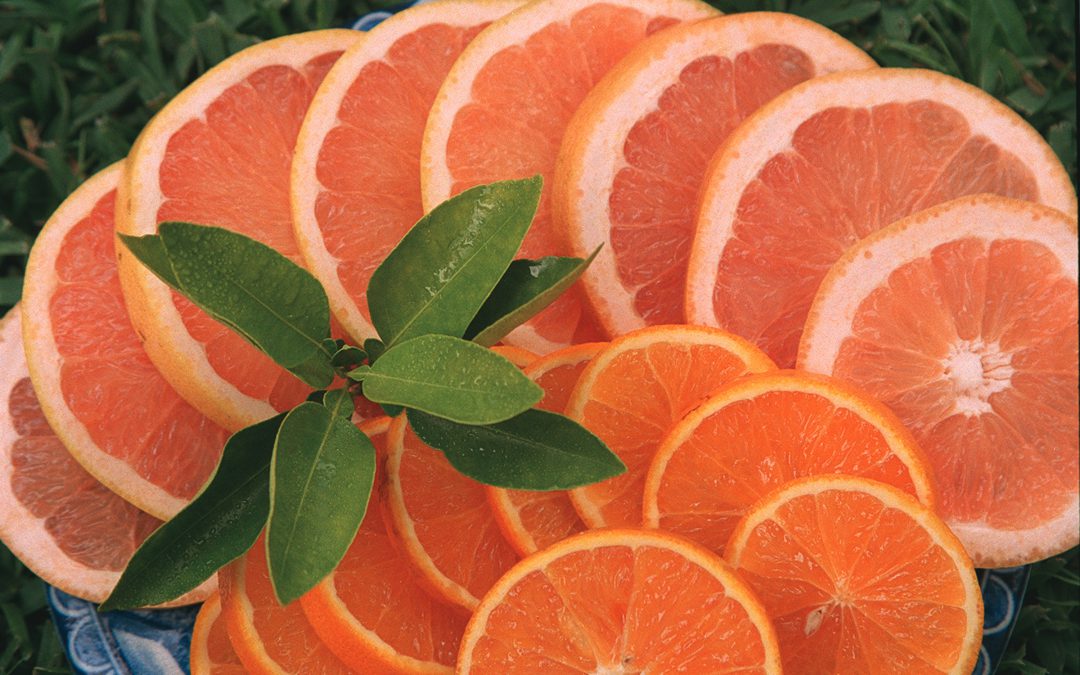
by Mary Salinas | Mar 12, 2014
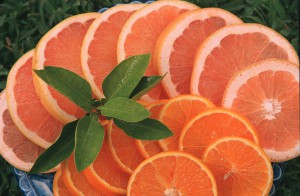
Delicious citrus! Photo by UF IFAS Thomas Wright.
All varieties of citrus – grapefruit, lemon, tangerine, kumquat and orange – are a vital part of our lives here in Florida. We love to grow citrus in our yards so that we can harvest the fruit fresh from the tree. On a wider scale, the citrus industry has a $9 billion annual impact on our economy providing over 76,000 jobs statewide.
But there are threats to our dooryard and commercial citrus from pests and disease. Only vigilance will help to combat the challenges so that we may continue to grow and enjoy our beloved citrus trees.
What can we do to protect our citrus?
- Learn about how to properly care for citrus and the pests and diseases that occur.
- Report any serious diseases like suspected citrus canker or citrus greening to the Division of Plant Industry by calling toll-free 1-888-397-1517.
- Purchase citrus trees only from registered nurseries – they may cost a little more but they have gone through an extensive process to remain disease and pest free. That will save you $$ in the long run!
- Don’t bring plants or fruit back into Florida – they may be harboring a pest!
- Citrus trees or fruit cannot move in or out of the State of Florida without a permit. This applies to homeowners as well as to the industry in order to protect our vital dooryard trees and citrus industry.
For more information please see:
Save Our Citrus Website
UF IFAS Gardening Solutions: Citrus
Citrus Culture in the Home Landscape
UF IFAS Extension Online Guide to Citrus Diseases
Your Florida Dooryard Citrus Guide – Common Pests, Disease and Disorders of Dooryard Citrus
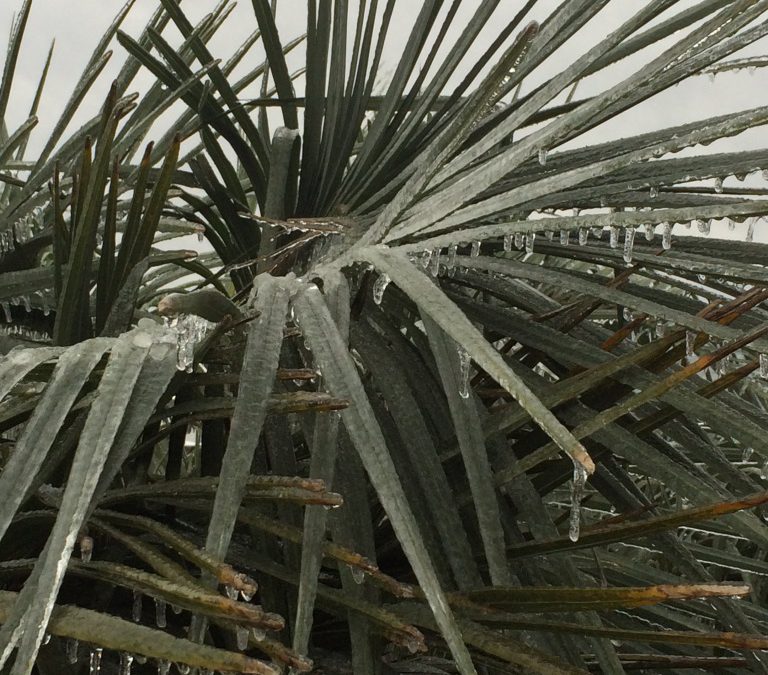
by Mary Salinas | Feb 4, 2014
The freezing rain last week across the panhandle left icicles hanging from street signs, rooftops, trees, shrubs and palms. Many people now wonder if their palms will survive the assault of the hard freeze. The chance of survival depends on the following factors:
- the most important consideration is the species of palm; a few of the most cold tolerant that are more readily available are pindo palm, mule palm, European fan palm, Chinese fan palm, needle palm, cabbage palm, and dwarf palmetto
- whether the palm is in an area protected by other vegetation or buildings
- proper fertilization with 8-2-12-4 has been followed
- palms have been properly pruned, i.e. only dead fronds have been removed from the crown (overtrimming by removing green fronds is a stress to the palm)
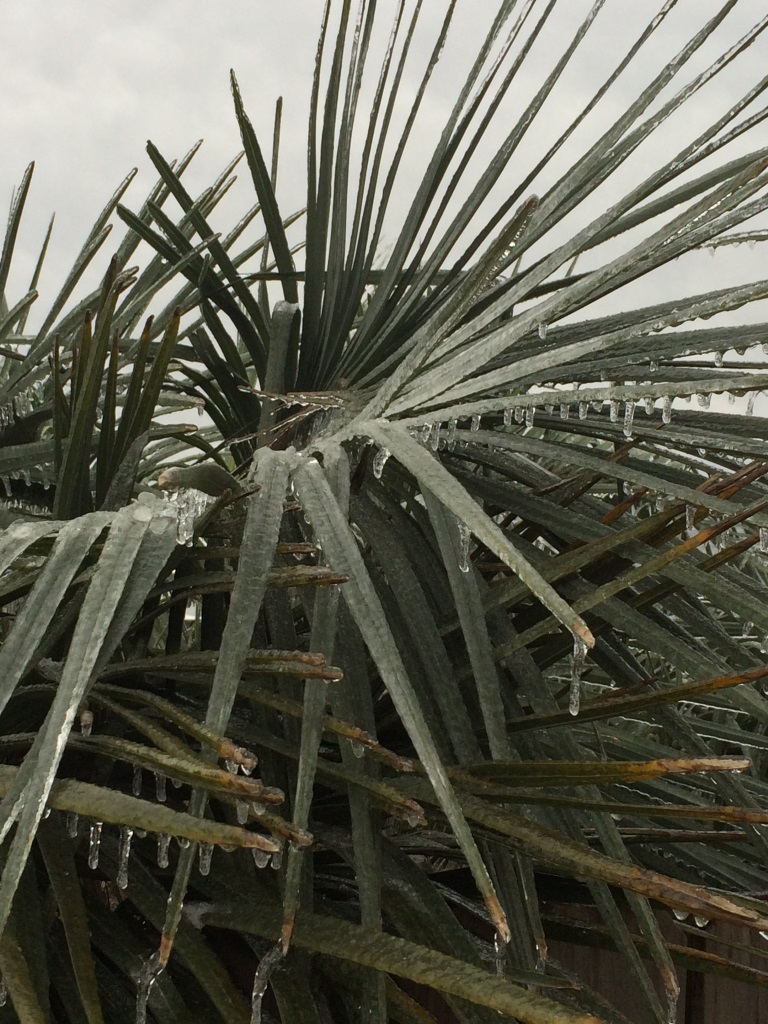
Icy pindo palm. Photo by Mary Derrick UF IFAS.
The best approach is to leave the palm alone until all danger of frost or freeze is past. Avoid the temptation to remove any of the dead fronds; they will help insulate and protect the meristem, or bud, that will produce new shoots.
If the palm is not too tall, in the spring check to see if the spear leaf (the newest frond that usually stands straight up and has not opened) can be easily pulled out. If the spear leaf does not pull out, the likelihood that the palm has survived is good. Don’t despair if the spear leaf does pull out as the meristem below it may still survive. The best strategy in that event is to remove the dead spear leaf and treat the bud area below the spear leaf with a copper fungicide to reduce the chance of infection of the bud. Be sure to use a copper fungicide and not a copper fertilizer, like copper sulfate.
Once spring comes and you find that the palms have survived, don’t be alarmed if the first new frond is deformed or has dead tips. The fronds that follow will most likely be normal. The palm will be building its depleted food reserves with new leaves so do not remove any fronds that have any green on them whatsoever. All green tissue is making food for the palm and helping it to recover from the cold stress. Only remove fronds that have completely died and have no green tissue.
When temperatures warm and the palms are actively growing, apply a palm fertilizer with the formulation of 8-2-12-4 with micronutrients.
For more information please see the following University of Florida IFAS publications:
Palms for North Florida
Cold Damage on Palms
Fertilization of Field-grown and Landscape Palms in Florida
Pruning Palms
by Mary Salinas | Jan 7, 2014
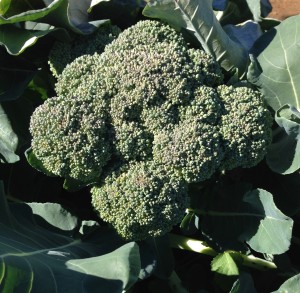
Broccoli, a popular winter vegetable. Photo by Mary Derrick, UF IFAS
In the Florida panhandle, we are fortunate to be able to grow crops throughout the year. The key is to know what to plant at the various times of the year.
Vegetables that can be planted now include beets, broccoli, cabbage, carrots, cauliflower, Chinese cabbage, collards, kale, kohlrabi, lettuce, green onions, English peas, radish and turnips. For those that are started from seed, especially carrots and radish, sow seed every 2 to 3 weeks to stagger the harvest.
During this cool time of the year, take stock of the vegetable garden area and decide if changes need to be made, such as moving or adding on to it. This is a good time of year to do the heavy labor before the warm, sweaty weather sets in. A popular choice is to add raised beds for growing herbs and vegetables. An advantage of a raised bed is that the garden starts with clean, rich soil that is weed and pest free. Grass and weeds do not have to be dug out for the garden; they can simply be covered by heavy groundcloth, newspaper or cardboard and the raised bed is placed on top.
[important]Consider getting a soil test if one has not been done within the past few years. Always get a soil test before adding lime – it will indicate if lime is needed and exactly how much to apply for best results. The cost is only $7 through the University of Florida. Contact the local Extension office for a soil test kit.[/important]
Stepping outside of the vegetable garden for a moment, for those interested in deciduous fruit such as peaches, pears and apples this is a great time to plant trees to give their roots time to develop before the warm, dry spring months. Be sure to select varieties that are proven performers for North Florida.
For further information please see:
Florida Vegetable Gardening Guide
Gardening in Raised Beds
Soil Sampling and Testing for the Home Landscape or Vegetable Garden
Deciduous Fruits for the Home Gardener in North Florida and North Central Florida
by Mary Salinas | Dec 24, 2013
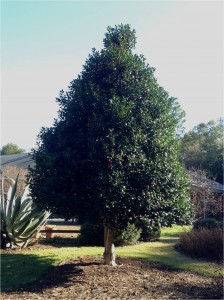
East Bay Holly. Photo by Mary Derrick, UF IFAS
[important]The best time to plant a tree was 20 years ago. The next best time is now. ~Chinese Proverb[/important]
In Florida, Arbor Day is always celebrated on the third Friday of January. In 2014, Arbor Day falls on Friday, January 17.
Consider planting a tree to enhance your property. Trees provide many benefits such as:
- Shade for leisure activities
- Lower energy costs for cooling
- Cover and food for wildlife
- Screen from unsightly views
- Privacy from neighbors
- Addition of value to your property; click here to determine the monetary value of a tree
If you have plenty of trees already, consider getting involved in a local community group that is sponsoring Arbor Day tree plantings. Or maybe your local church, park, non-profit or school would appreciate the donation and planting of a new tree.
So what trees are best to choose for the Florida panhandle? Some things to consider are soil type and pH, light, and any overhead obstructions. Click here for a publication that discusses what to consider when choosing a tree. Florida Trees for the Urban and Suburban Landscape will help you choose a particular tree species for your site. Considerations in tree selection may include bloom color and season, mature size, hurricane resistance, and whether it is evergreen or deciduous.
Once you have chosen a great tree for your specific site, proper installation and care is crucial to the success of your new tree. Click here to learn all about planting and caring for your tree.
For more information please see:
Arbor Day Foundation: Florida
Native Trees for North Florida
Palms for North Florida
Planting Trees in Landscapes
National Tree Benefit Calculator








